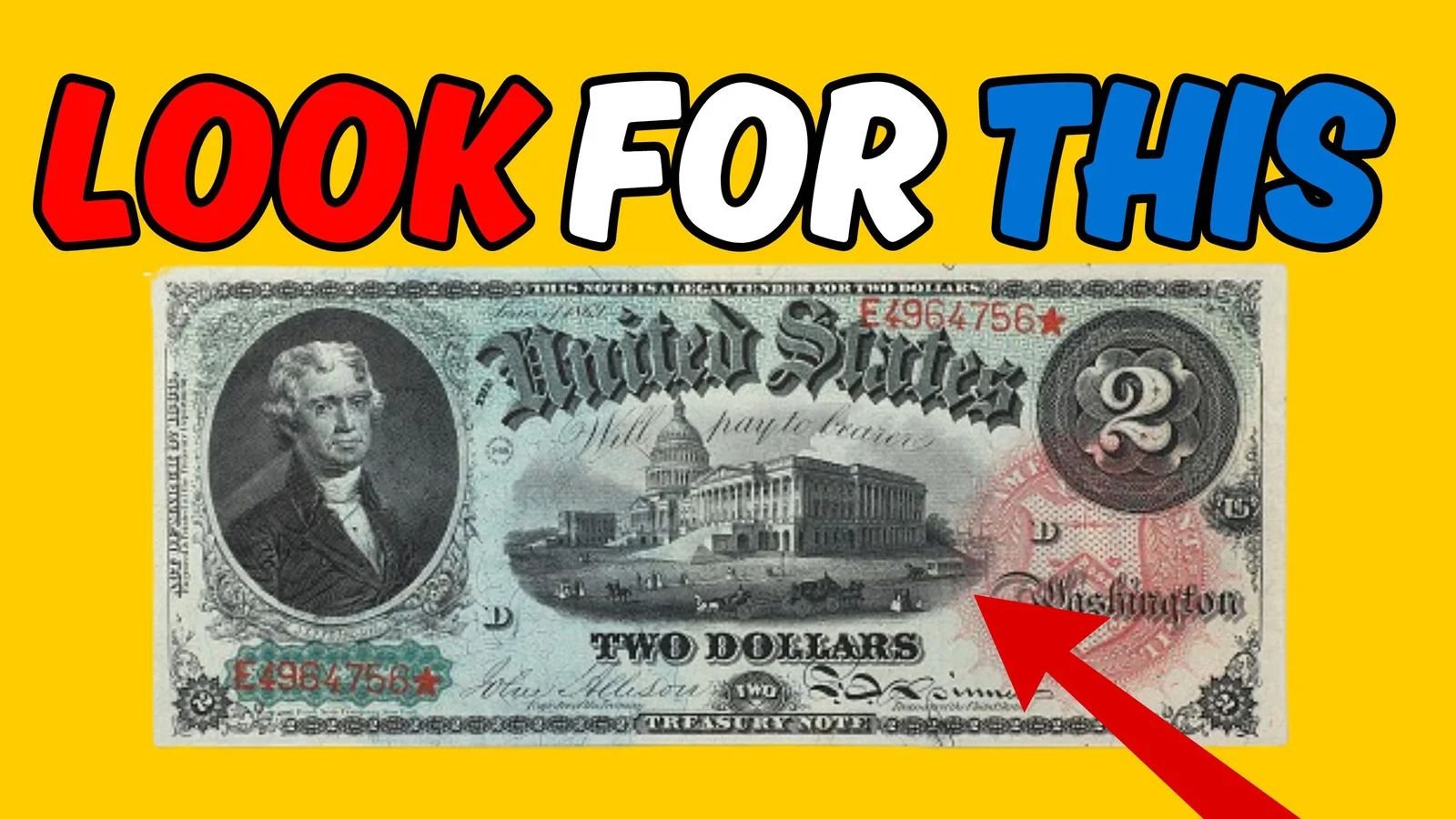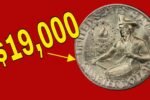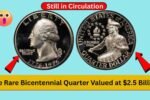In a world dominated by one- and five-dollar bills, the $2 Bill remains a curious rarity—common enough to still appear occasionally but often overlooked in everyday transactions. Most passersby would dismiss it as just another note, unaware that many types of $2 Bill variants carry stories of history, scarcity, and surprising collector value. Believe it or not, in 2025 collectors are still finding versions worth hundreds, even thousands, of dollars—while others strike gold with simple star replacements or vintage seals. Below we explore what makes a $2 Bill truly special, and how an ordinary wallet find might just turn into a valuable treasure.
What Makes a $2 Bill Valuable?
Several factors can elevate a plain $2 Bill from nominal currency to rare collectible:
- Star Notes & Replacement Bills
Replacement $2 Bill star notes are printed when errors occur during production. Identified by a ★ symbol in the serial number, they’re printed in much smaller quantities than regular notes—so collectors value them more. - Seal Color & Series Year
Early $2 Bill issues featured distinctive seals:- Red Seal $2 Bill (Series 1928–63) had a red Treasury seal—today, those are in demand.
- Brown Seal $2 Bill, issued around 1890, is especially rare and can command substantial premiums.
- Unique Serial Numbers
Collectors love serials that stand out—low numbers like 00000001, repeating “ladder” sequences like 12345678, palindromes, or “radar” notes that read the same backward and forward. - Printing Errors & Misprints
Error $2 Bill notes featuring off-center prints, misaligned seals, doubled serials, or smeared ink can be rare collectibles—especially if the mistake is striking and verified. - Age & Condition
The earliest $2 Bill legal tender notes from the 1860s to 1920s, if preserved in uncirculated (mint) condition, are highly collectible—well into the thousands of dollars.
Valuable Series & Types of $2 Bills
| Series / Type | Key Features | Approximate Value (USD) |
|---|---|---|
| 1890 Treasury “Mini‑Porthole” | Brown seal, intricate early design | Up to $4,500 (mint) |
| 1928B Red Seal Star Note | Red seal + ★ replacement symbol | $1,000–$7,500 |
| 1869 “Rainbow Note” | Multicolored design, red seal | $500–$2,500+ |
| 1862 Legal Tender Note | Early issue featuring Alexander Hamilton | $300–$2,500+ |
| 1976 Star / Low-Serial / Error Notes | Modern rarity with fancy serials or errors | $100–$2,700+ |
| 1995–2003 Star Notes | Limited-star production run | $20–$500+ |
Real Examples & Recent Auction Sales
- A 2003 star note $2 Bill sold for around $2,400 at Heritage Auctions in July 2022—and current demand may push it higher.
- A pristine 1890 Treasury $2 Bill, uncirculated, hit $4,500—making it the current top benchmark.
- A misprinted 1970s $2 Bill with a “crooked” serial fetched between $400–$700.
- A low-serial $2 Bill with “L 00000008” star note, though slightly worn, still made $1,631 at auction.
How to Spot a Valuable $2 Bill
If you happen to stumble across a $2 Bill, here’s a guide to spotting potential gems:
- Check the Series & Seal
Rarer $2 Bill types often hail from the 1860s–1920s: look for legal tender or treasury notes with red or brown seals. - Review the Serial Number
Special serial patterns increase a note’s appeal: star replacements, palindromes, ladders, or very low numbers are all worth noting. - Look for Printing Errors
Hold the $2 Bill up to light—see if the seal is misaligned or the serials are double-printed, or if ink has shifted or smeared. - Evaluate Condition
Uncirculated $2 Bill notes—crisp, no folds or stains—bring the highest prices. Even slight wear can reduce value dramatically.
Preserving & Selling High-Value $2 Bill Notes
- Preservation: Use acid-free sleeves; avoid folding, light exposure, and moisture that could degrade the paper.
- Authentication: Get promising notes professionally verified by reputable services like PCGS or PMG.
- Selling Platforms: Heritage Auctions, Stack’s Bowers, eBay, U.S. Currency Auctions, and numismatic forums are ideal venues to fetch top dollar for collectible $2 Bill notes.
Frequently Asked Questions (FAQs About $2 Bill)
Q1: Are all $2 bills rare and valuable?
No. Most $2 Bill notes circulating today are ordinary Federal Reserve notes—worth face value. Only those with rare features (seal color, star, series year, serial, or error) attract premium prices.
Q2: Which $2 bills are the most valuable in 2025?
Eye-catching picks include:
- 1890 Treasury Brown Seal notes
- 1928B Red Seal Star notes
- 1860s–1920s legal tender notes
- Special 1976 star or low-serial error notes
These can command hundreds to thousands of dollars.
Q3: What is a “Star Note”?
A star note is a replacement $2 Bill printed when a mistake damaged one in production. Their serial number ends with a ★, making them rarer and collectible.
Q4: Could I find a rare $2 bill in my change today?
Yes! Though uncommon, it does happen—especially if you find money saved from the 1970s or earlier, or inherited old pocket change.
Q5: How do I sell a valuable $2 Bill safely?
First, get it graded/authenticated professionally. Then sell through auction houses or reputable dealers to ensure you receive fair market value.
Final Takeaways
- Most $2 Bill notes are worth just $2—but certain seal, series, rarity, or error features can hike their value into the thousands.
- Currently coveted types include 1890 brown-seal Treasury issues, 1928B red-seal star notes, and unique low-serial or error notes from the late 20th century.
- If you stumble upon a suspicious-looking $2 Bill, don’t spend it—investigate its origin, serial, seals, errors, and condition first.
- Take high-resolution photos, get insight from forums, consider professional grading, and then sell smartly.
Next Steps for Curious Collectors
- Scour your piggy banks and old wallets—the next valuable $2 Bill may be hiding in overlooked change.
- Share photos on collector forums (e.g., CoinTalk) for early input on rarity.
- Take high-potential notes to a certified grading service. Even a mid-grade $2 Bill star note can sell for hundreds.
The Bottom Line
For most, the $2 Bill is a quirky relic. But for the keen-eyed collector in 2025, it can be a window into wealth and history. Even without stumbling upon a million-dollar error, finding a rare 1890 Treasury note or a crisp 1976 star serial could easily net you thousands. That unassuming green-note in your hand may just be the guardian of an unexpected fortune. So next time a $2 Bill crosses your path, pause and look a little closer—you might just be holding a piece of history, and possibly a small fortune.
Some Important Link
| Telegram Group | Click Here |
| WhatsApp Group | Click Here |
| Home Page | Click Here |















